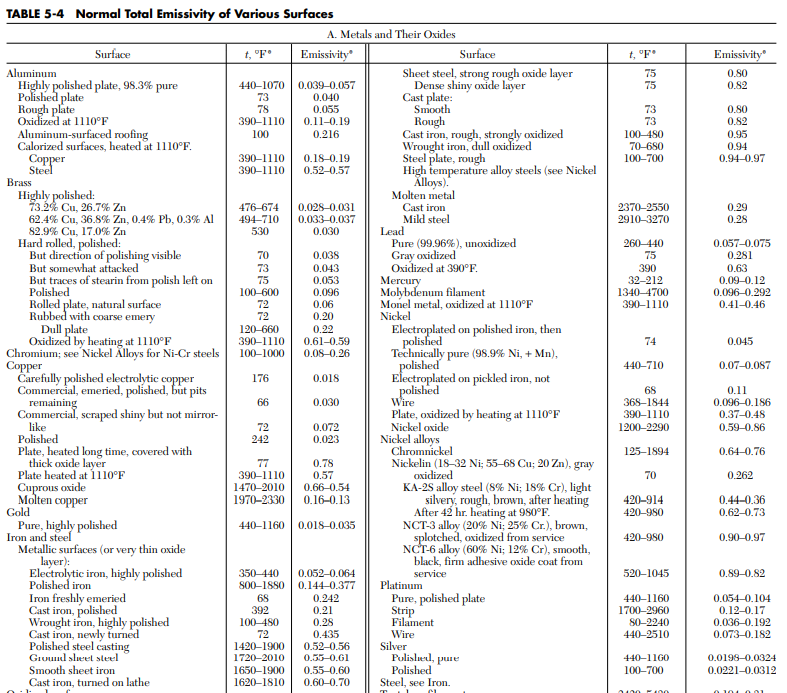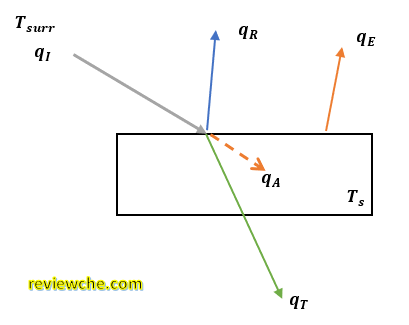III. Thermal Radiation
A. Steffan – Boltzmann Law: Total Emissive Power
All bodies at a certain temperature emit energy in form of photons. This energy does not require medium to travel. When a body emits radiation, all sorts of wavelength are emitted which carries definite energy with it.

|
A blackbody is considered to be perfect absorber and emitter of energy. The power emitted by a black body is given by the expression: |
T – absolute temperature (K) |
| The units reflected above are SI units. | |
Example 8:
What is the maximum total emissive power that an object at 45 oC will emit?
Required: Eb
Solution:
T = 45 + 273.15 = 318.15 K
![]()
![]()
![]()
B. Wien’s Displacement Law: Maximum emissive power
The wavelength with which the blackbody emits the maximum emissive power is provided by the Wein’s Displacement Law.
![]()
Example 9:
An explosion reaches a temperature as high as 1000K. In what region of the spectrum of radiation does it emit the highest energy?
Solution:
![]()
![]()
![]()
C. Heat flux: Net heat transfer
Because all bodies emit radiation, a body actually experiences a net heat transfer due to simultaneous emission and reception of radiation. Contrary to a blackbody, a real body will emit or absorb lesser radiation due to several factors including radiation selectivity.
|
Real Body’s Distribution of Incident radiation: |
|
a. Blackbody
Because blackbody is both a perfect absorber and emitter, it doesn’t reflect anything.
![]()
b. Gray Body
Gray body only absorbs a fraction of incoming radiation and emits radiation just a factor of the radiation a black body would emit at the same temperature. This emission factor is called emissivity ![]() .
.
![]()
The above expression is only true if the object is surrounded by an atmosphere or contained in an enclosure and no part of emission is being intercepted by itself. In this case, the view factor is 1. Emissivity values for common material surfaces are tabulated in 8th Perry’s Handbook, Eq. 5 – 4, p. 21,22 .

Example 10:
A fluid flows inside the pipe of 10 cm diameter. The average surface temperature is 50 oC. How much heat is lost through radiation to the surroundings at 20 oC. The length of the pipe 2 m painted with a white enamel.
Required: q
Solution:
Tsur = 50 + 273.15 = 323.15 K
Ts = 10 + 273.15 = 283.15 K
L = 2 m
D = 10/100 = 0.1 m
![]() = 0.897 (Obtained from Perry’s Handbook if not available)
= 0.897 (Obtained from Perry’s Handbook if not available)
![]()
![]()
![]() (Negative value means energy is produced by the system)
(Negative value means energy is produced by the system)
Example 11:
A gray body maintained at 400 K is surrounded by an atmosphere at 300K. The heat loss due to radiation is 396.93 W/m2 . What is the fraction of the incident radiation that the body will reflect assuming that it does not allow transmission?
Required: r
Solution:
![]()
![]()
![]()
For gray body:
![]()
![]()
![]()
![]()
